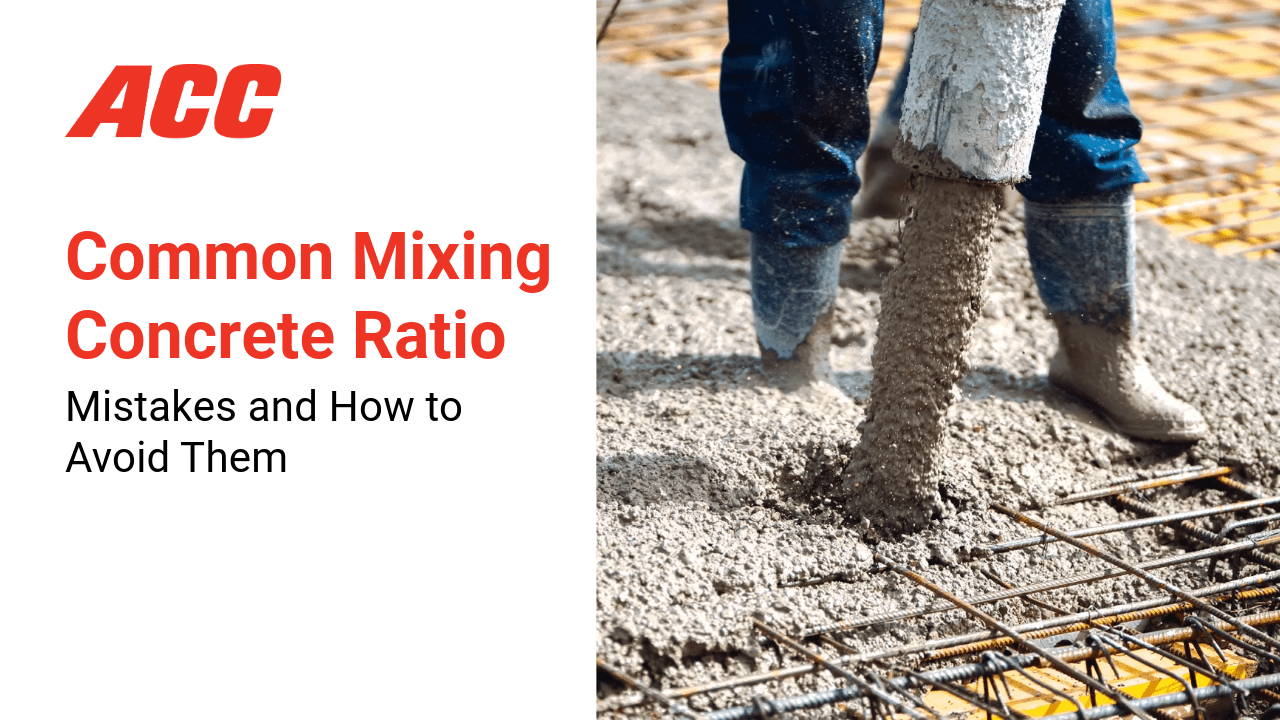Concrete might seem like a simple mix of cement, water, sand, and aggregates but getting the ratio wrong can lead to costly structural issues. A poor mix can reduce strength, cause cracks, or compromise durability. Whether it’s a small home project or full-scale construction, understanding and avoiding common mixing ratio mistakes is key to a strong, lasting build.
Mistake 1: Adding Too Much Water
One of the most common mistakes is adding more water than necessary. While it may make the concrete easier to mix or pour, too much water dilutes the cement paste, reducing strength and increasing shrinkage. The final structure becomes more prone to cracking and surface dusting.
How to avoid it:
Stick to the water-cement ratio recommended for the project. A typical ratio is about 0.4 to 0.6 (water to cement by weight), depending on the application. Use measuring tools for accuracy in your concrete mix ratio instead of estimating.
Mistake 2: Incorrect Sand to Aggregate Ratio
Too much sand makes the mix sticky and harder to work with, while too much aggregate can weaken the bond between particles. Both scenarios result in uneven texture and compromised strength.
How to avoid it:
The standard mix for general-purpose concrete is 1:2:4 (cement:sand:aggregate). It’s important to maintain this cement and sand ratio unless a different ratio is specified. Start with batch mixing with measured quantities for consistency.
Mistake 3: Using Low-Quality Materials
Even the best cement can’t perform if the aggregates or water used in the mix are impure. Dirty sand or water with chemicals can interfere with hydration and bonding, reducing overall durability.
How to avoid it:
Use clean, well-graded sand and potable water. Choose high-quality cement from reliable brands. ACC Cement’s products like ACC Super Shaktimaan Cement and ACC F2R Cement are known for their consistent quality and strength, making them ideal for precise concrete mixes.
Mistake 4: Ignoring Mix Purpose
Not all concrete mixes serve the same purpose. A ratio that works well for a floor slab may not be strong enough for a column. Using one mix ratio for all construction elements is a major oversight.
How to avoid it:
Adjust the mix based on where the concrete is being used. For example, structural components like beams and columns need a richer mix (1:1.5:3), while non-load-bearing structures can use leaner mixes. Refer to BIS codes or consult an expert. Using versatile ratio cement which delivers high strength, can provide added confidence in structural works.
Mistake 5: Inconsistent Mixing
Inconsistent or poor mixing can leave pockets of dry cement or unblended aggregates in the batch, creating weak points in the structure. It also affects the finish and curing process.
How to avoid it:
Always mix concrete thoroughly whether by hand or with a mixer. Add water gradually and ensure uniform distribution. PPC cement offers better workability and a smoother mix, reducing the chance of clumping or uneven blending.
Mistake 6: Not Accounting for Weather
Temperature and humidity impact how concrete cures. In hot conditions, water evaporates quickly, leading to weaker concrete. In cold conditions, hydration slows down, affecting strength gain.
How to avoid it:
Adjust the mix and curing time based on the weather. Use curing compounds or cover the mix to retain moisture.
Mistake 7: Guesswork Instead of Measurement
Eyeballing ingredients might save time, but it costs in quality. Without precise measurement, your mixing concrete ratio will vary from batch to batch, leading to inconsistent strength and finish.
How to avoid it:
Always measure ingredients by weight or volume using buckets, scales, or standard batching methods. Following consistent ratios ensures structural integrity. It is very important to remain precise in mixing, and use cement that is formulated to support consistent batching for all types of construction.
The ACC Advantage in Concrete Mixing
ACC Cement has been a trusted name in Indian construction for decades. Their products are crafted with superior-quality clinker, fine particle size, and workability-enhancing additives that reduce mix-related errors. Whether it’s ACC OPC 43 Grade for general RCC work or ACC PPC for mass concreting, each product is designed to support balanced, durable mixes.
The company’s commitment to quality goes beyond products, they also offer support and guidance to help customers understand proper mixing practices, ensuring every structure stands the test of time.
Final Thoughts
Mixing concrete is more than just combining ingredients. It’s about precision, purpose, and understanding how each element contributes to strength and durability. By avoiding common mistakes and choosing reliable materials like ACC Cement, builders and homeowners alike can ensure their projects are built on a solid foundation.
A home is built once. Make sure the ratio in concrete is just right because the strength of your structure depends on it.

